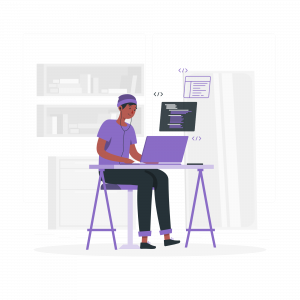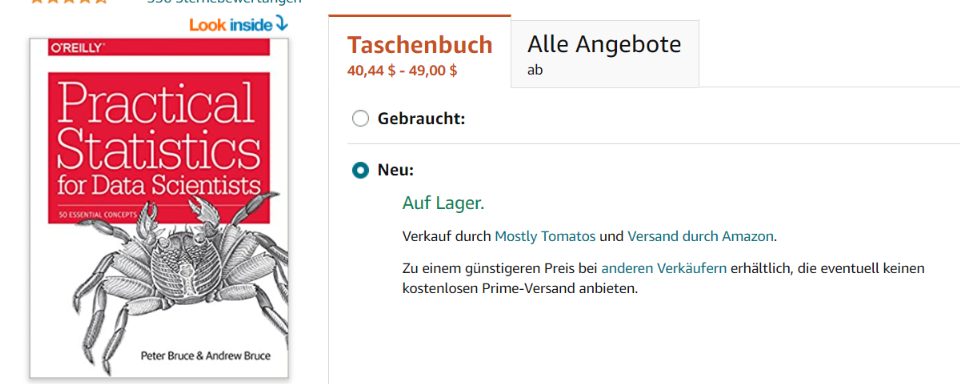In 2022, coding is, and will likely always be, the most sought-after skill for the next-generation workforce.
On Glassdoor’s list of most popular job roles, 8 out of 25 are tech positions. Another report discovered that demand for coders grows 12% more than that for professionals in other fields.
With all this data in mind, if you are looking for one skill that’ll instantly increase your relevance on the job market, programming is CODING.
But, a lot of beginners feel intimidated by coding and have no idea where to start.
So, in this post, we will take a look at two approaches to learn coding – a top-down and a bottom-up one and share a list of resources you can use for each of these.
Ready? Let’s go!
What’s Your Way to Learn Programming? Top-Down vs Bottom-Up!
In software development, there are two schools of thought – Top-Down Approach VS Bottom-Up Approach
The fans of the former start learning from fundamentals and slowly apply this basic knowledge to solve advanced problems, increasing the difficulty as they go. Whereas, the followers of the latter prefer making things from the get-go without meddling too much in abstract concepts.
Let’s take a look at the merits and limitations of both!
1. Top-Down Approach: Build Apps From Day One

This learning strategy exposes students to complex projects from the start of the learning curve.
Although it doesn’t give beginners a solid grasp on the theory behind concepts, it shows what you can accomplish by learning computer science and gives aspiring programmers a tangible achievement, i.e, a product they built from scratch.
Here are some benefits of Top-Down Learning:
- Learning is fun.
- Students collect portfolio samples and projects from day one.
- Hands-on understanding of how to translate abstract ideas into programming.
Here are some drawbacks of Top-Down Learning:
- Reliance on instructions listed in tutorials.
- Knowledge gaps in fundamentals.
- Struggles when replicating the code written by the lecturer.
2. Bottom-Up Approach: Back to the Basics

Learning software development by starting from low-level concepts (strings, variables, loops, and functions) and gradually increasing the difficulty is another popular learning strategy used in most CS programs.
Rather than training aspiring programmers to navigate one language, educators explain general programming concepts that hold true for a broad range of languages (OOP or functional).
The benefits of Bottom-Up learning are:
- Solid grasp of the basics.
- Easy-to-plan curriculum.
- As you advance, learning gets easier and more manageable.
The drawbacks of Bottom-Up learning are:
- It takes months before you are skilled enough to build projects from scratch.
- Can get boring and non-stimulating.
If you are guided by the right tools, both these approaches become a fun and rewarding way to learn to program. So now that we know the basics of Top-Down & Bottom-Up learning, let’s check a few resources for them!
Read more: Software Product Development: Definition, Types, Methodologies & Process!
The Best Resources For Top-Down Programming Learning
Here are the resources that prioritize real-world applications of CS while giving coders a clear understanding of the basics. We’ve divided the list into four parts: Back-End Software Development, Front-End Software Development, Data Science & Mobile Application Development.
For Back-End software development
1. CodeGym Java Tutorial

Codegym.cc is a practice-driven Java course. 80% of the curriculum are coding tasks, applicable in real-world scenarios while the remaining 20% cover theoretical concepts.
The learning process is engaging – there’s a high variety of quizzes that cover both basic (syntax, multi-threading, OOP) and advanced (JDBC, Servlets, JSP).
2. Derek Banas

Derek Banas has one of the most engaging, hands-on Youtube channel a programming learner can come across.
From a single video, aspiring coders can learn how to build JavaScript projects, mobile apps, stylesheets, and many more projects.
Following Derek’s tutorials doesn’t take much time – in 5 videos, you can build a game of Tetris.
3. CS Dojo

YK Sugi, the creator of the channel and a software engineer at Google, frequently films detailed step-by-step coding project walkthroughs that let developers put their programming skills to good use.
Take a look, for example, at this engaging video in which he builds the Snake game in Python.
For Front-End Software Development
4. David Walsh

As a former Mozilla developer, Mr. Walsh has a lot of coding experience to share with novice programmers – which he does flawlessly on his blog.
David frequently writes about JS, Node.js, React.js, and gives insightful front-end tips. Check out his write-up on building RetroPie on Raspberry Pi.
For Data Science
5. Towards Data Science

This online community unites over 600,000 data science professionals and enthusiasts to share reflections and case studies.
Here, aspiring ML and DS professionals can discover ways to apply theoretical concepts to solve real-life problems and find answers to big questions!
6. Elite Data Science

The resource prioritizes top-down learning, making sure that aspiring data scientists never lose track of the bigger picture.
Instead of reading through long tutorials, coding students can get the hang of fundamentals by using cheat sheets and visually expressive tables for references.
For Mobile Application Development
7. Android Development Community Forums

If you are a fan of hands-on learning rooted in real-world applications, what’s a better starting point in mobile development than a stroll through Android Development Community forums?
Here, programming learners can use the experience of other programmers for references and find a way around challenges in designing applications.
8. Try Git

If you are through with plain-text tutorials, how about getting to know Git through the series of interactive challenges and tasks?
Try Git invites programming students to practice branching by calling commands from the browser window, see how pre-constructed scenarios play out, and download Git-it – an app that teaches you the basics of version control straight from the terminal.
Read more: 13 Programming Blogs and Websites to Improve Your Coding Skills
Top Resources for Bottom-Up Programming Learning
For Back-End software development
1. The Self-Taught Programmer: The Definitive Guide to Programming Professionally

Cory Althoff, the author of the book, is a self-taught engineer who later went on to work for eBay – that alone puts value in his words.
On top of that, “The Self-Taught Programmer” is easy to read and generic enough to be applicable across different technologies. The book covers OOP, the basics of algorithms and architecture, and introduces readers to best coding practices.
2. Programming with Mosh

With every upload, Mosh Hamedani saves the grades of thousands of CS students all over the world.
By 2022, he has successfully uploaded crash courses covering the basics of top back-end and front-end programming languages.
After watching any of his one-hour videos, you’ll have a solid grasp of Python, Java, or MySQL syntax.
3. MIT OpenCourseware

Even if you did not make it to the MIT CS program, the good news is, you can still learn together with those who got in. MIT OpenCourseware shares full lecture recordings on object-oriented programming, and Python syntax. Other courses include database engineering, artificial intelligence, and many more. These materials will give a full grasp of the theoretical foundations of computer science.
For Front-End Development
4. Mozilla Developer Network

If you are looking for detailed documentation on JavaScript and CSS, Mozilla Developer Network will fit your needs like a glove. Through the range of beginner-to-advanced tutorials, the platform gives aspiring programmers a full foundation in front-end development!
5. JavaScript For Cats
 If you are looking for a fun way to hammer down JS fundamentals, check this resource out.
If you are looking for a fun way to hammer down JS fundamentals, check this resource out.
What makes it so engaging? Well, cats! Jokes aside, JS for cats does a good job at illustrating concepts by featuring examples from the IDE and describing real-life applications for language components.
For Data Science and Artificial intelligence
6. Practical Statistics for Data Scientists

This book is a full rundown of fundamental statistical concepts data scientists use.
Given the fact that few DS enthusiasts have formal statistical training, such a resource is essential for covering knowledge gaps.
The good news is, “Practical Statistics For Data Scientists” is more than a statistics textbook – each concept is backed by relevant data science examples in Python.
For Git and Version Control
7. Git Immersion

Git Immersion is a library of documentation entries that teaches developers the basics of working with the repository, creating projects, making changes, committing, and staging.
The tutorial is highly flexible – you can tailor the preferences to match the type of projects you will be publishing!
Conclusion
Depending on the approach you choose to learn to program, it’s good to have a versatile toolset by your side.
Armed with the blogs, platforms, and Youtube channels featured in this post, you will be able to create an engaging learning schedule and become a skilled Java, Python, or AI developer.
No matter what tool you use, remember that PRACTICE is what’s going to make you perfect! So, keep practicing and working hard and you’ll be a pro coder in no time.
We wish you the best of luck!
Further reads:
Software Development Process: Steps To Follow
Top 11 Code Editors for Software Developers
Test Plan for Software: What, Why and How to Write It?

Related posts
Bit.ai | Watch to Learn More
What is Bit.ai?
Bit.ai is an innovative AI-driven knowledge and Document Managment suite designed to empower knowledge workers by streamlining the creation of, documents, wikis, and notes. With an intuitive interface and seamless integration, Bit.ai acts as a versatile assistant to help you collaborate, generate, organize, and visualize your ideas effortlessly. Whether you are drafting a report, managing a project, collaborating with your team or clients, or brainstorming new concepts, Bit.ai brings intelligence and creativity to every aspect of your work process.


